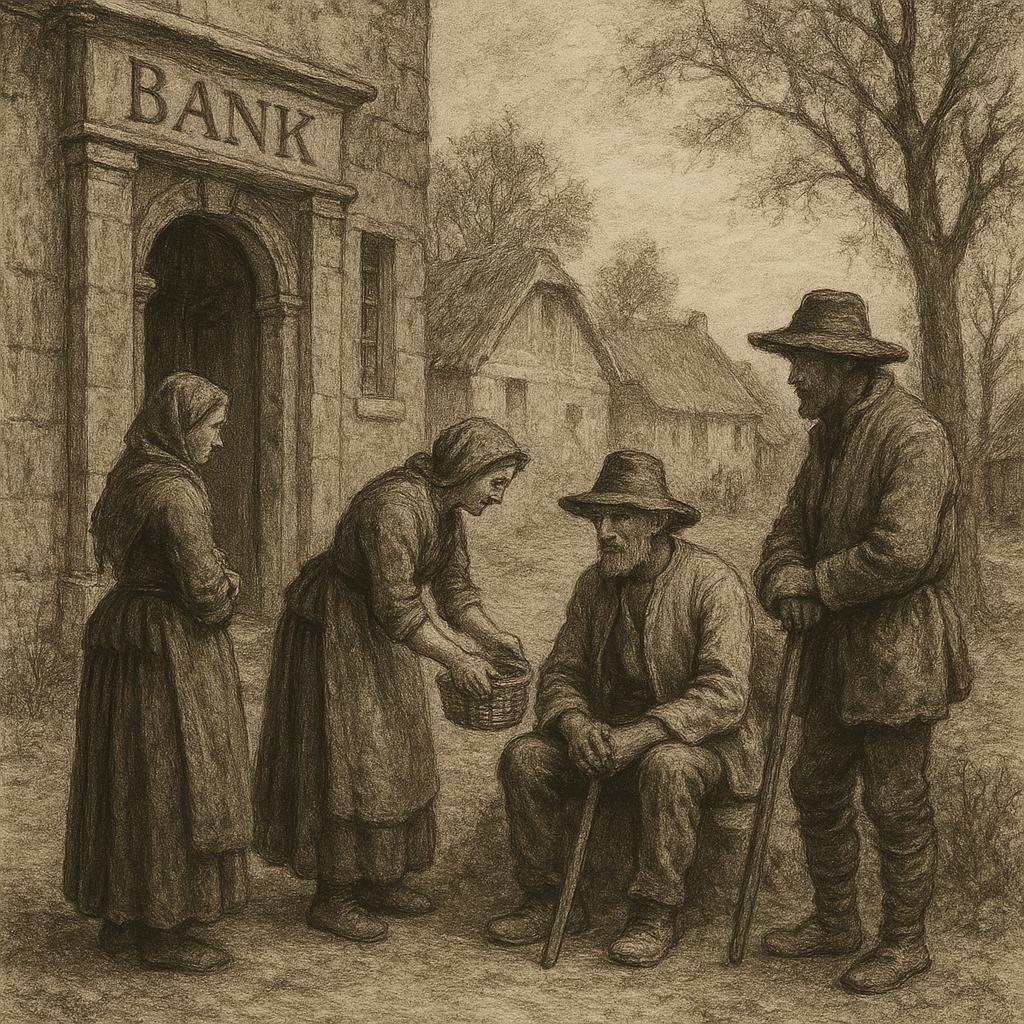Two centuries of existence is a milestone for any institution. An unnamed bank celebrates it with pride, banners, and self-congratulation. Yet what exactly is being celebrated? Behind the polished speeches and champagne lies a darker truth. For 200 years, ordinary people suffered while this bank thrived. That contrast is grotesque.
Life 200 years ago
Two hundred years ago, life was short and brutal. Poverty was the common condition. Illness meant death if you had no money for a doctor. And most people didn’t. Families were crammed into overpopulated rooms, where disease spread like wildfire.
Inequality was staggering. A few elites lived in comfort, while the majority toiled endlessly for scraps. Prisons were cruel, filthy, and inhumane. Punishment was often torture. Justice was a privilege of the rich.
Lifespan was short. Many never saw fifty. Children died in shocking numbers, often before their first birthday. Survival was not a guarantee, but a daily struggle.
The bank’s endurance vs human fragility
While people struggled to live, the bank survived, expanded, and accumulated power. It outlasted kings, governments, and wars; it grew rich because it had access to what people did not: money, security, and the power to collect.
It was not neutral, it was not benevolent. And it grew by taking from those who had almost nothing. The poor worked, the bank extracted. It took surplus value from labor, interest from debt, and fees from desperation. While workers’ lives ended early, the bank’s life stretched across centuries.
The grotesque contrast is clear. Human beings were fragile and disposable. The institution was immortal and untouchable.
Forward into the future
As decades passed, industrialization deepened the cycle. Workers produced, but banks absorbed the profits. The sweat and blood of miners, factory workers, and farmers enriched the financial elites. Wars destroyed nations but created new lending opportunities.
Economic collapses ruined families but stabilized banks with government protection. The system was never about fairness. It was about extraction. Generation after generation, the bank gained wealth from the poverty of others.
Developed vs developing world
Two centuries later, the world is not the same everywhere. In the developed countries, people now live longer, healthier, and more secure lives. Medicine advanced, lifespans doubled, and education became accessible for most. Poverty no longer defines the majority. Yet inequality remains sharp. Housing crises, debt traps, and financial speculation show how banks still extract surplus values even from wealthy societies. The poor may not die at thirty anymore, but they still pay the bill of financial manipulation.
In the developing world, the picture is harsher. Billions live on fragile incomes. Healthcare is weak, sometimes absent. Illness still means death without money. Education is patchy, inequality staggering, and life expectancy far shorter. Debt enslaves entire nations to banks and international lenders. Instead of escaping poverty, many countries remain trapped in the same mechanisms of extraction that existed 200 years ago.
Progress has been uneven. Some societies moved forward, but the grotesque imbalance remains. The bank celebrates not because it helped humanity, but because it profited from both prosperity and misery.
The grotesque celebration
So what is really being celebrated after 200 years? It is not human progress, it is not a better world. And it is the endurance of an institution that lived off misery. It is the triumph of marble buildings, gala dinners, and fine wine, financed by centuries of extraction.
Every champagne glass lifted in celebration is built on the surplus values of the poor. Every speech about stability hides the truth of exploitation. The irony is unbearable. A bank celebrates its longevity while the people who sustained it died young, poor, and forgotten.
Conclusion
A 200-year celebration by a bank is not a story of human progress. It is the opposite. It is a reminder that institutions can thrive for centuries while human beings remain fragile, short-lived, and exploited.
Human progress should not be measured by the survival of banks. It should be measured by whether ordinary people live longer, healthier, and freer lives.
The grotesque truth is simple. The bank became rich off the poor. It captured every surplus value it could. And it dares to celebrate.

Leave a Reply